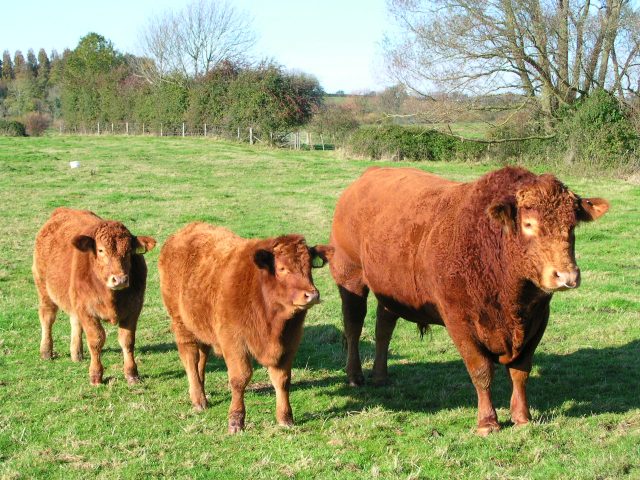Type the name of the breed you're looking for below
[wpdreams_ajaxsearchlite] Don't see the breed your're looking for? Click here and let us know!
South Devon cattle
| Place of Origin | Great Britain |
| Origin | The early years; It is believed South Devon cattle evolved from the large red cattle of Normandy which were imported to England at the time of the Norman invasion. The South Devon of today originated in South West England, in an area of Devon known as the South Hams from where they spread right across the counties of Devon and Cornwall. Historical evidence indicates that isolation caused the divergence of the North and South Devon into physically distinct types, though occasional crossing between the two breeds occurred until the mid-nineteenth century. The breed in the nineteenth century; The South Devon had been established as a breed by the year 1800. With a light red coat, they were powerfully built and supplied rich milk and good beef, finely grained and marbled, and were relied upon to pull ploughshares until well into the nineteenth century. Careful selection of breeding stock improved the breed considerably. The South Devon Herd Book Society was founded in 1891 when it was recognised by the government as an official body, and the South Devons become one of the fourteen breeds of cattle whose herd books date back to the second half of the nineteenth century. The breed in the twentieth century; During the early years of the twentieth century the breed was considered as dual purpose, for the production of milk and beef. Although most herds were milked during and soon after the Second World War the trend has been increasingly towards beefier sires since the 1960s. Although it is now a purely beef breed, the dual-purpose heritage has significance for the suckling of calves. The breed in the twenty-first century; Recently, there have been attempts to re-introduce the breed into dairy farming. Taverner's Farm in Devon has a small herd which they use to produce their own brand of ice cream (Orange Elephant ice cream). They have attempted to produce a bull for this herd by artificial insemination of their aged prize heifer with 45-year old semen from the Rare Breeds Survival Trust's national genetic archive. As of August 2008, this has been unsuccessful after the calf was stillborn. |
| Purpose | The breed today is predominately used for beef production although it has been milked in the past. |
| Appearance | Stocky with orange-red colouration. |
| Horns | Either horned or naturally polled (hornless). |
| Bulls Average Weight | 1,200 – 1,500 kg (2,646 - 3,307 lbs.) |
| Other Considerations | The official governing body, The South Devon Herd Book Society was founded in 1891. The breed is exceptionally adaptable to varying climatic conditions and is presently well established on five continents. Wherever they have been introduced South Devon cattle have been well accepted and exhibited strong performance for production and profitability. South Devons were one of the few British breeds to have been selected for draught purposes as well as for beef and milk. The first importations into Australia were of milking cows carried on sailing ships. Several large importations occurred in the late 19th and early 20th centuries but the breed then lost its identity through crossbreeding. Importations from Britain took place in 1969, and the first purebred animals were imported from New Zealand in 1971. The breed occurs in most states of Australia. The first South Devons were taken to the United States in 1969, and in 1974 the North American South Devon Association was formed for the purpose of development, registration and promotion of the South Devon breed in that country. |



